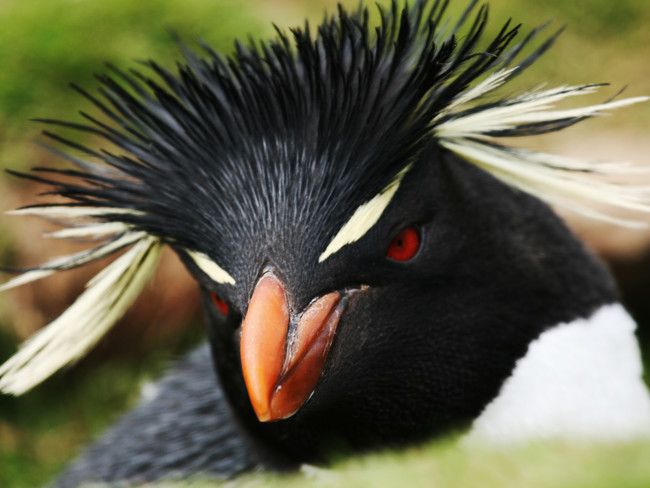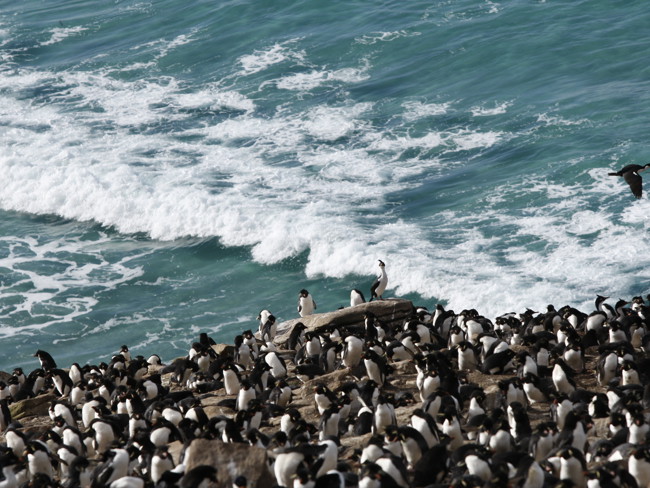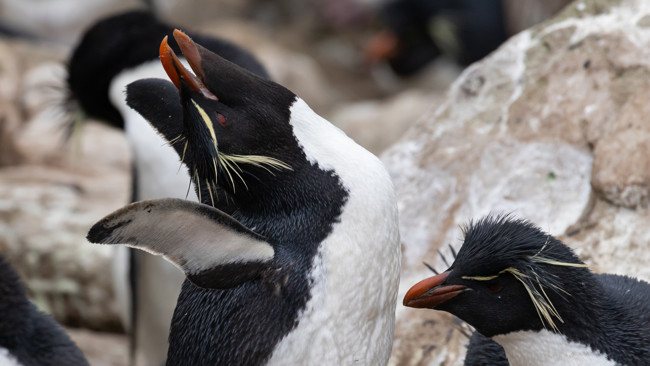With its distinctive yellow crests and determined attitude, the rockhopper penguin is one of the most colourful personalities in the penguin world. It lives on remote, wind-swept islands in the South Atlantic, and on the Falkland Islands you have the chance to encounter it in its true element during our Grand Antarctica Voyage. Here we share some fascinating and fun facts about this small but bold bird.
Hopping among the cliffs
The rockhopper penguin’s international name could not be more fitting. With quick, powerful jumps, it makes its way over boulders and up steep cliffs on the way to its nesting sites.
Punky hairstyle
The rockhopper penguin is easy to recognise by its wild yellow crests that stick out to the sides like raised eyebrows. The result is a punky hairstyle that perfectly reflects its bold personality.
Small but full of attitude
Although it stands only about 50 cm tall and weighs just over 2.5 kilos, the rockhopper penguin is famous for its fiery temperament. Researchers have even observed them chasing away much larger birds from their nesting sites.


A faithful partner
Unlike the emperor penguin, both the male and female rockhopper share the incubation duties. The egg is kept warm on the parent’s feet beneath a fold of skin (known as a brood pouch), and they take turns guarding it, often switching every two to three weeks. Meanwhile, the other parent is out at sea, feeding to build up strength for the next shift.
Living in large, noisy colonies
When the breeding season arrives, rockhopper penguins gather in vast colonies teeming with life and sound, often numbering in the tens of thousands. In the tall tussock grass they build their nests, surrounded by the constant commotion of courtship, quarrels, and protective behaviour — an organised yet noisy chaos.
One chick per year
Rockhopper penguins return year after year to the same breeding site — often to the very same nest — and lay their eggs in late October or early November. They almost always lay two eggs, but the first is smaller and rarely hatches. As a result, usually only one chick is raised each season. Both parents share the duties of incubating the egg and feeding the chick until it is ready to fend for itself.
Masterful swimmer
In the water, it is a skilled hunter. The rockhopper can dive down to 100 metres in search of fish, krill, and squid, and remain underwater for up to two minutes.


A life of up to 20 years
Rockhopper penguins live on average 10–15 years in the wild, but under favourable conditions some individuals can reach as much as 20 years.
Colonies on the Falkland Islands
The Falkland Islands are one of the best places in the world to see rockhopper penguins. Here, several easily accessible colonies allow you to observe their fascinating daily lives up close.




